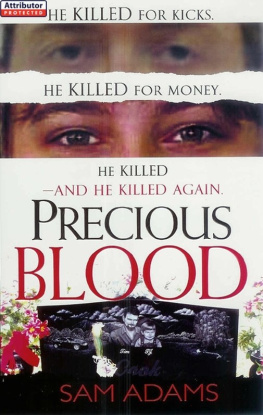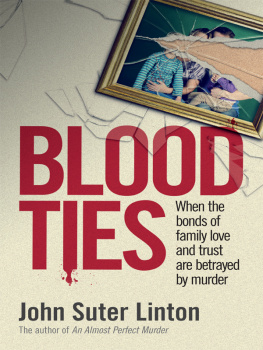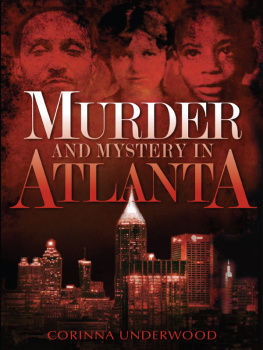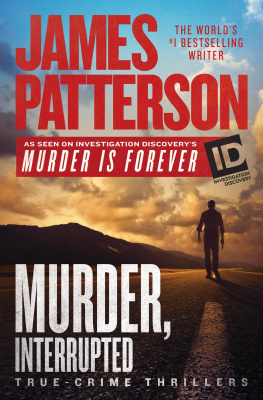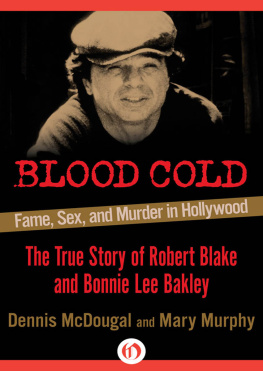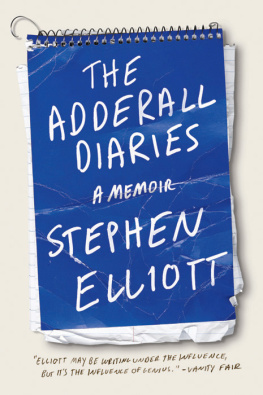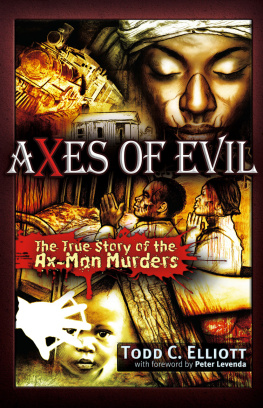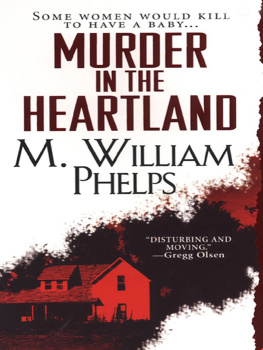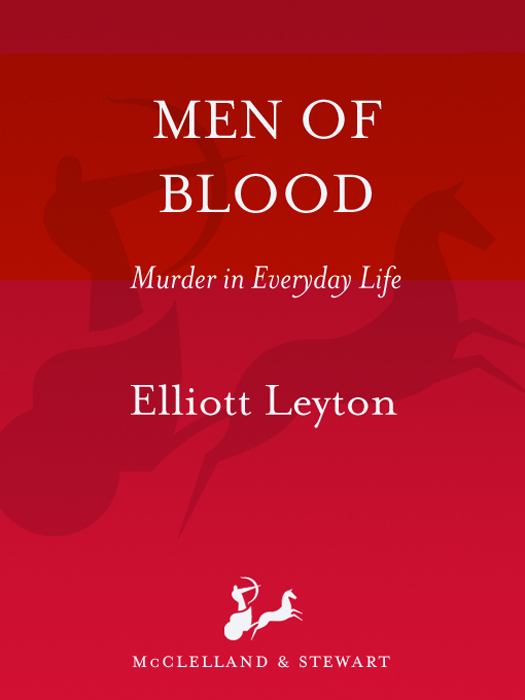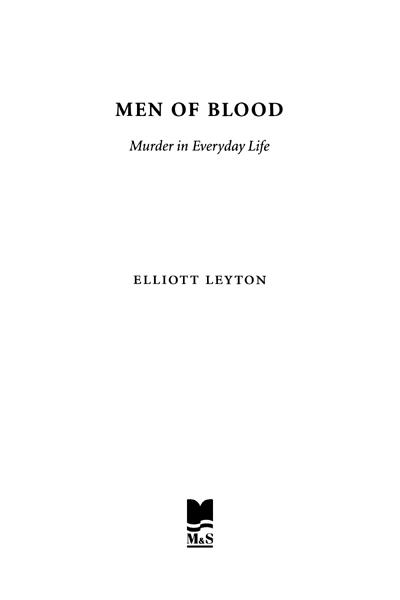ALSO BY ELLIOTT LEYTON
Dying Hard
The Myth of Delinquency
Hunting Humans
Sole Survivor
Touched by Fire (with Greg Locke)
Copyright 1995, 1996, 2002 by Elliott Leyton
Cloth edition published 1996
Trade paperback edition published 1997
Revised trade paperback edition published 2002
All rights reserved. The use of any part of this publication reproduced, transmitted in any form or by any means, electronic, mechanical, photocopying, recording, or otherwise, or stored in a retrieval system, without the prior written consent of the publisher or, in case of photocopying or other reprographic copying, a licence from the Canadian Copyright Licensing Agency is an infringement of the copyright law.
Library and Archives Canada Cataloguing in Publication
Leyton, Elliott, 1939
Men of blood : murder in everyday life / Elliott Leyton. Rev. ed.
eISBN: 978-1-55199-647-9
1. Murder England. 1. Title.
HV6535.G7L49 2002 364.15230942 C2002-903123-0
We acknowledge the financial support of the Government of Canada through the Book Publishing Industry Development Program and that of the Government of Ontario through the Ontario Media Development Corporations Ontario Book Initiative. We further acknowledge the support of the Canada Council for the Arts and the Ontario Arts Council for our publishing program.
First published in Great Britain by Constable & Company Ltd.
McClelland & Stewart Ltd.
The Canadian Publishers
75 Sherbourne Street,
Toronto, Ontario
M5A 2P9
www.mcclelland.com
v3.1
For Mark Sean Bray Leyton
he cursed, Come out, come out, thou bloody man
The Lord hath returned upon thee all the blood
and, behold, thou art taken in thy mischief,
because thou art a bloody man.
(II. Samuel 16:7, 8)
Contents
Preface
A Perspective on America
AMERICA IS FAR MORE THAN just the sole surviving superpower. It is also one of the worlds greatest civilizations. The U.S.A.s brilliant contributions to art, literature, theatre, film, music, medicine, science, and technology are unparalleled, as is its veneration of personal freedom, its industrial capacity, and its military prowess.
Yet the United States is bedevilled by internal misery. Compared to the rest of the developed industrial world, its distribution of wealth constitutes a form of cruel and unusual punishment for the poor (who are, after all, the primary perpetrators of the overwhelming majority of homicides). America may be among the most generous nations on earth towards its winners, but a more barren fate awaits those struggling at the bottom of society. Moreover, Americas public educational systems are in disarray and no longer meet the needs of an advanced industrial society; the poor have only sporadic and often inferior access to medical and dental care; and its grotesque infant mortality rates place it firmly in the Third World.
Moreover, violent crime is a gaping wound, and these high levels of violence occur despite the nations vindictive treatment of its criminals. America remains the only developed society on the planet that still routinely employs the death penalty; it incarcerates a larger percentage of its population than virtually any other similar nation; and its much-heralded war on drugs has become an employment opportunity for both organized crime (which grows by supplying the population), and for a justice system that remorselessly expands its size, wealth, and power in a pointless struggle to enforce the unenforceable.
More disturbingly, the per capita rate at which its citizens murder each other is unparalleled in the developed world. No one else even comes close: Americans face between five and ten times the chance of being murdered as do Western Europeans, and three to four times the chance of Canadians. One of the reasons the American public tolerates this may well be that they do not realize how singular they are in this regard. Indeed, in Western Europe and what used to be called the British Dominions, rates are only a fraction of those in America. In fact, American homicide rates are exceeded only by those of collapsing political orders such as Russia and Argentina, or in the uncontrolled chaos of the Third World in Latin America and Africa.
For instance, in 1996 the Network for Research on Crime and Justice reported the following troubling differences in homicide rates between selected but comparable US and Canadian cities:
| Halifax 2.4 (per 100,000 population) | Norfolk, Virginia 24.8 |
| Montreal 3.0 | Philadelphia 27.8 |
| Ottawa 1.9 | Washington DC 73.1 |
| Toronto 2.4 | Chicago 28.6 |
| Winnipeg 4.4 | Minneapolis 23.0 |
| Calgary 1.3 | Denver 12.4 |
| Vancouver 5.2 | Seattle 6.9 |
Despite these astonishing figures, many American intellectuals and scholars seem unaware of their unique place in the modern world as the most murderous of developed nations. When it is brought to their attention, it tends to be dismissed with a kind of defeatism, or with the preposterous claims that America is different, a special case, or with bizarre assertions that a major society cannot have a rate much lower than this. Indeed, when a Canadian colleague was speaking to a group of U.S. criminologists about Canadian murder rates, his audience complained that the figures were too low to be believable.
The puzzle is that according to conventional criminological explanations, English and American homicide rates should be very similar. Like America, England is also tortured by gross inequalities in the distribution of wealth. The identical ethnic, religious, and racial tensions divide people from one another. The same collapsing social infrastructure denies the weakest succour and comfort. The decaying inner cities breed crime and despair. And the sometimes brutal policing systems exacerbate all this anguish. But England produces one of the lowest rates of homicide in the world. Even the oversupply of firearms in the hands of American citizens may not be the full explanation, although two-thirds of American homicides are committed with firearms. England has a very low rate of private firearms ownership, and only 10 per cent of homicides are committed using firearms, but since the 1990s when private ownership of handguns and rifles was essentially abolished, the use of firearms in homicide has consistently increased (and the use of firearms in crime has increased by an estimated 40 per cent!). Conversely, Canada and Switzerland have high rates of firearms ownership, but they both have low homicide rates and a general reluctance to use firearms in crime. This suggests that the dominant culture, not technology, may be the primary infection.
Comparative Data
Homicide rates rose dramatically in the mid-1960s in many, if not most, Western nations. In the United States, in Canada, and in England, the rates doubled and even tripled. This radical increase puzzled criminologists at the time and continues to do so, although various theories have been put forward to explain such an increase during a time of unprecedented economic prosperity and social mobility.
What is especially interesting is that in Canada the mid-1960s eruption peaked in 1974, after which the rates slowly returned to their original levels. Yet in the United States, the increase continued remorselessly through the 1970s, 1980s, and well into the 1990s. The rates finally reached a plateau in the U.S.A. in the mid-1990s, but it is not yet clear whether this is the harbinger of a major downward trend, or merely a pause in the escalation. This latter concern is reinforced by recent FBI figures that show murders in the U.S. were up slightly in 2001, compared to the previous year in which murders had fallen 1.1 per cent. Indeed, some commentators have already hinted that the mid-1990s drop in U.S. violent crimes may well be levelling off.


